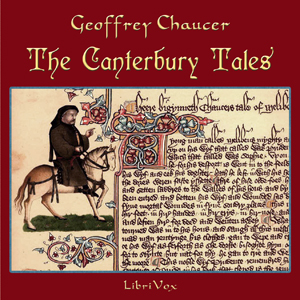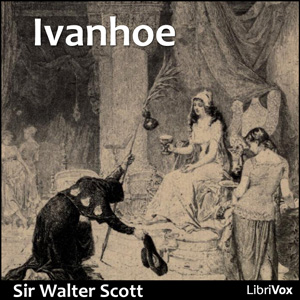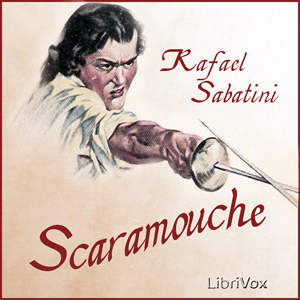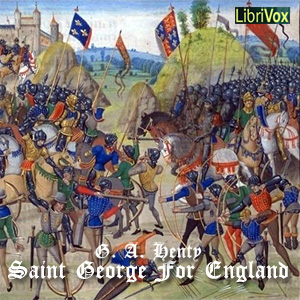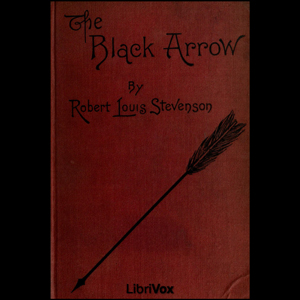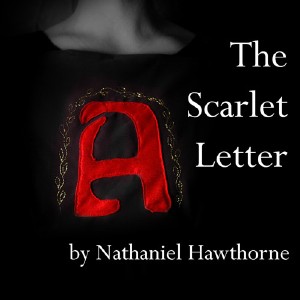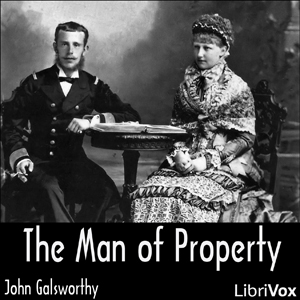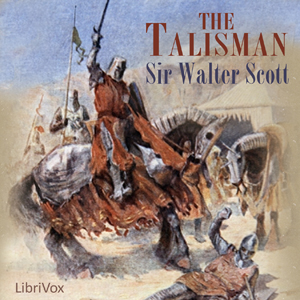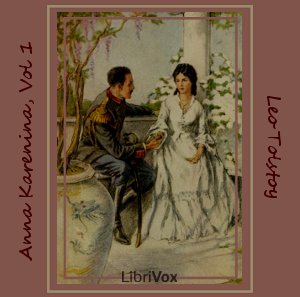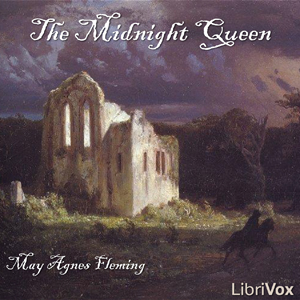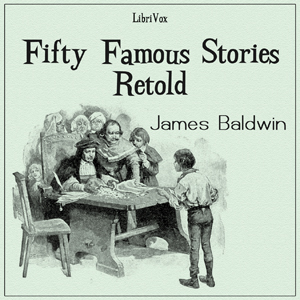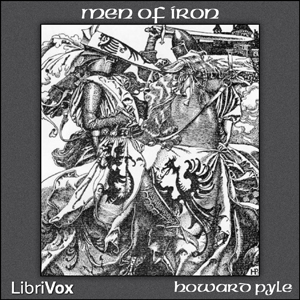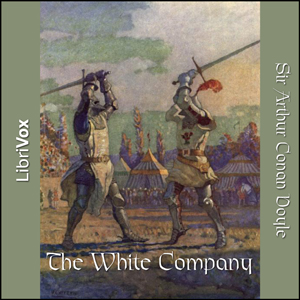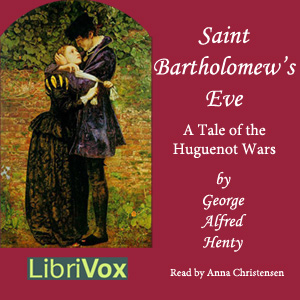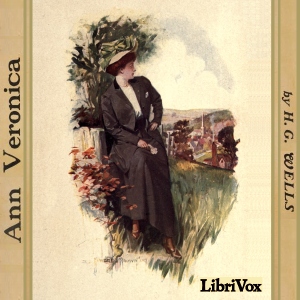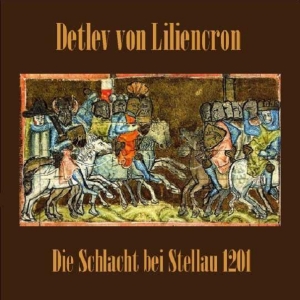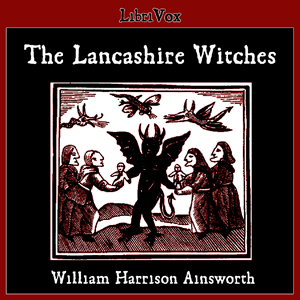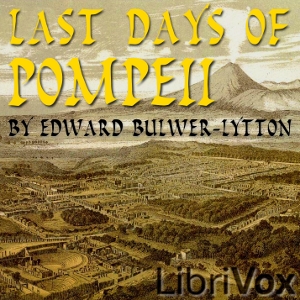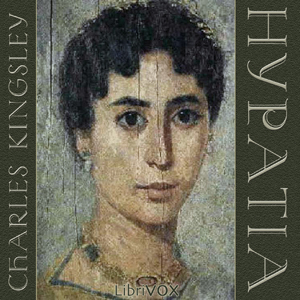The Canterbury Tales is a collection of stories written in Middle English by Geoffrey Chaucer in the 14th century (two of them in prose, the rest in verse). The tales, some of which are originals and others not, are contained inside a frame tale and told by a group of pilgrims on their way from Southwark to Canterbury to visit the shrine of Saint Thomas Becket at Canterbury Cathedral.
The themes of the tales vary, and include topics such as courtly love, treachery, and avarice. The genres also vary, and include romance, Breton lai, sermon, beast fable, and fabliau. The characters, introduced in the General Prologue of the book, tell tales of great cultural relevance.
The version read here was edited by D. Laing Purves (1838-1873) “for popular perusal” and the language is mostly updated.
(Summary by Wikipedia/Gesine)
29 episodes
Follows the fortunes of the son of a noble Saxon family in Norman England as he woos his lady, disobeys his father, and is loved by another. Set in late 12C England and in Palestine with Richard Cœur-de-Lion at the Crusades, it's another ripping historical yarn by Scott (summary by annise)
44 episodes
A Tale of Two Cities (1859) is a historical novel by Charles Dickens; it is moreover a moral novel strongly concerned with themes of guilt, shame, redemption and patriotism.The plot centers on the years leading up to French Revolution and culminates in the Jacobin Reign of Terror. It tells the story of two men, Charles Darnay and Sydney Carton, who look very alike but are entirely different in character.(Summary from wikipedia)
45 episodes
Oliver Twist is an 1838 novel by Charles Dickens. It was originally published as a serial.Like most of Dickens' work, the book is used to call the public's attention to various contemporary social evils, including the workhouse, child labour and the recruitment of children as criminals. The novel is full of sarcasm and dark humour, even as it treats its serious subject, revealing the hypocrisies of the time.It has been the subject of numerous film and television adaptations, and the basis for a highly successful British musical, Oliver!. (Summary from wikipedia)
53 episodes
Scaramouche is a romantic adventure and tells the story of a young aristocrat during the French Revolution. His successive endeavors as a lawyer, politician, actor, lover, and buffoon lead his enemies to call him "Scaramouche" (also called Scaramuccia, a roguish character in the commedia dell'arte), but he impresses many with his elegant orations and precision swordsmanship. The later film version includes one of the longest, and many believe, best swashbuckling sword-fighting scenes ever filmed.The novel has a memorable start (Book I: The Robe, Chapter I, 'The Republican'): "He was born with the gift of laughter and a sense that the world was mad. And that was all his patrimony. His very paternity was obscure, although the village of Gavrillacs had long since dispelled the cloud of mystery that hung about it."
(Summary by Gord)
36 episodes

War and Peace (Russian: Война и мир, Voyna i mir; in original orthography: Война и миръ, Voyna i mir") is an epic novel by Leo Tolstoy, first published from 1865 to 1869 in Russki Vestnik, which tells the story of Russian society during the Napoleonic Era. It is usually described as one of Tolstoy's two major masterpieces (the other being Anna Karenina) as well as one of the world's greatest novels.
War and Peace offered a new kind of fiction, with a great many characters caught up in a plot that covered nothing less than the grand subjects indicated by the title, combined with the equally large topics of youth, age and marriage. While today it is considered a novel, it broke so many novelistic conventions of its day that many critics of Tolstoy's time did not consider it as such. Tolstoy himself considered Anna Karenina (1878) to be his first attempt at a novel in the European sense. (Summary by Wikipedia)
Note: The novel is split in 15 books. This is the recording of book one, which covers the events in the year 1805.
28 episodes
A tale written for children in 1885.
It tells of a child of noble birth whose parents have fallen foul of the current royalty. He is placed in hiding and grows up with a bowyer and then apprenticed to an armourer just outside the gates of the City of London.
He becomes accomplished in arms and joins the campaign in France where we see the battles of Crecy and Poitiers through his eyes.
A tale of heroism and 14th century viciousness.
Great fun.(summary by jimmowatt)
23 episodes
A land owner, Vasili Andreevich, takes along one of his peasants, Nikita, for a short journey to another town. He wishes to get to the town quickly 'for business'. They find themselves in the middle of a blizzard, but the master in his avarice wishes to press on. They eventually get lost off the road and they try to camp. The master's peasant soon finds himself about to die from hypothermia. The master leaves him on the horse to stubbornly try to find the road. When he returns, he attains a spiritual/moral revelation, and Tolstoy once again repeats one of his famous themes: that the only true happiness in life is found by living for others. (Wikipedia)
10 episodes
The Black Arrow tells the story of Richard (Dick) Shelton during the Wars of the Roses: how he becomes a knight, rescues his lady Joanna Sedley, and obtains justice for the murder of his father, Sir Harry Shelton. Outlaws in
Tunstall Forest organized by Ellis Duckworth, whose weapon and calling card is a black arrow, cause Dick to suspect
that his guardian Sir Daniel Brackley and his retainers are responsible for his father's murder. Dick's suspicions
are enough to turn Sir Daniel against him, so he has no recourse but to escape from Sir Daniel and join the outlaws
of the Black Arrow against him. This struggle sweeps him up into the greater conflict surrounding them all.
The story of the Wars of the Roses is told in miniature by The Black Arrow. (Summary from Wikipedia)
33 episodes
The children of Colonel Beverley, a Cavalier officer killed at the Battle of Naseby are believed to have died in the flames when their house, Arnwood, is burned by Roundhead soldiers. However, they escape and are raised by Joseph Armitage, a gamekeeper in his cottage in the New Forest. The story describes how the children adapt from an aristocratic lifestyle to that of simple cottagers. The children are concealed as the grandchildren of Armitage.Eventually after Armitage's death, Edward Beverley leaves and works as a secretary for the sympathetic Puritan placed in charge of the Royal land in the New Forest. He then joins the army of the future King Charles II and after the Royalist defeat at the Battle of Worcester, he escapes to France and lives in exile until the Restoration.His brother and siblings continue to live in the New Forest and they are reunited on the King's return. (Summary from Wikipedia)
27 episodes
The story begins in seventeenth-century Salem, Massachusetts, then a Puritan settlement. A young woman, Hester Prynne, is led from the town prison with her infant daughter, Pearl, in her arms and the scarlet letter “A” on her breast. The scarlet letter "A" represents the act of adultery that she has committed; it is to be a symbol of her sin for all to see. She will not reveal her lover’s identity, however, and the scarlet letter, along with her public shaming, is her punishment for her sin and her secrecy. (Summary adapted from Wikipedia)
26 episodes
Red Shadows is the first of a series of stories featuring Howard's puritan avenger, Solomon Kane. Kane tracks his prey over land and sea, enters the jungles of Africa, and even faces dark Gods and evil magic -- all to avenge a woman he'd never met before. (Summary by Paul Siegel)
5 episodes
'The Forsyte Saga' is the story of a wealthy London family stretching from the eighteen-eighties until the nineteen-twenties. The Man of Property is the first book in the saga. The 'man of property' of the title is Soames Forsyte, a partner in the family law firm. He is married to Irene but the marriage is not happy and during the book she falls in love with another man.
Another branch of the family is headed by 'Old Jolyon,' estranged from his bohemian artist son 'Young Jolyon' and the story tells of their rapprochement and of Young Jolyon's daughter June who is engaged to an architect Philip Bosinney.
For those familiar with the Forsytes, this book takes us up to the night when Soames exercises his 'rights' and to the death of Bosinney. (Summary by Andy Minter)
33 episodes

North and South is a social novel that tries to show the industrial North and its conflicts in the mid-19th century as seen by an outsider, a socially sensitive lady from the South. The story: the heroine, Margaret Hale, is the daughter of a Nonconformist minister who moves to the fictional industrial town of Milton after leaving the Church of England. The town is modeled after Manchester, where Gaskell lived as the wife of a Unitarian minister. The change of lifestyle shocks Margaret, who sympathizes deeply with the poverty of the workers and comes into conflict with John Thornton, the owner of a local mill, also a friend of her father. After an encounter with a group of strikers, in which Margaret attempts to protect Thornton from the violence, he proposes to her, telling her that he is in love with her; she rejects his proposal of marriage, mainly because she sees it as if it were out of obligation for what she had done. Later, he sees her with her fugitive brother, whom he mistakes for another suitor, and this creates further unresolved conflict. Margaret, once she believes she has lost his affection, begins to see him in another light, and eventually they are reunited. (Summary from Wikipedeia)
52 episodes

“Can You Forgive Her?” is the first in a series of six Trollope novels dealing broadly with 19th Century English political scene. It introduces the reader to Plantagenet and Glencora Palliser, as they court, marry, and as Plantagenet sets out on his political career, which is carried on in the foreground or background throughout the series. Each novel has a focus on other particular characters, as well. In this one, it is the dilemma of Alice Vavasor, who is a young woman choosing between two suitors: one who has all the best qualities, but who prefers a retiring private life, and another, whose qualities are doubtful, but who is ambitious for public office. There is also a comic subplot involving a widowed aunt, who also must choose between two suitors: Mr. Cheeseacre, a dull but stable farmer, and Capt. Bellfield, a charming but somewhat erratic retired military man. (Summary by Karen Merline)
This is the first of Trollope’s six “Palliser” novels. LibriVox recordings of other novels in the series are available:
1-Can You Forgive Her?
2-Phineas Finn, the Irish Member
3-The Eustace Diamonds
4-Phineas Redux
5-The Prime Minister
6 The Duke’s Children
80 episodes
El Dorado, by Baroness Orczy is a sequel book to the classic adventure tale, The Scarlet Pimpernel. It was first published in 1913. The novel is notable in that it is the partial basis for most of the film treatments of the original book. (Summary from wikipedia)
50 episodes
The Talisman is a gripping tale set near the end of the Third Crusade. King Richard the Lionheart is grievously ill, and all around him the leaders from allied countries plot and scheme to gain personal power, putting the future of the crusade in jeopardy. Sir Kenneth of Scotland finds himself caught up in events, and finds both his honour and his life are now on the line. Can a cure be found for the King? Can Kenneth redeem his honour? – Written by Rowen.
32 episodes

Dead Souls (Russian: Мёртвые души) by Nikolai Gogol, Russian writer, was first published in 1842, and is one of the most prominent works of 19th-century Russian literature. Gogol himself saw it as an "epic poem in prose", and within the book as a "novel in verse". Despite supposedly completing the trilogy's second part, Gogol destroyed it shortly before his death. Although the novel ends in mid-sentence (like Sterne's Sentimental Journey), it is usually regarded as complete in the extant form.In Russia before the emancipation of the serfs in 1861, landowners were entitled to own serfs to farm their land. Serfs were for most purposes considered the property of the landowner, and could be bought, sold, or mortgaged against, as any other chattel. To count serfs (and people in general), the measure word "soul" was used: e.g., "six souls of serfs". The plot of the novel relies on "dead souls" (i.e., "dead serfs") which are still accounted for in property registers. On another level, the title refers to the "dead souls" of Gogol's characters, all of which visualise different aspects of poshlost (an untranslatable Russian word which is perhaps best rendered as "self-satisfied inferiority", moral and spiritual, with overtones of middle-class pretentiousness, fake significance, and philistinism). (Summary from Wikipedia)
27 episodes
Anna Karenina tells of the doomed love affair between the sensuous and rebellious Anna and the dashing officer, Count Vronsky. Tragedy unfolds as Anna rejects her passionless marriage to follow her heart and must endure the hypocrisies of society. (Summary by Mary Anderson)
34 episodes
May Agnes Fleming is renowned as Canada's first best-selling novelist. She wrote 42 novels, many of which have only been published posthumously.
The Midnight Queen is set in London, in the year of the plague 1665. Sir Norman Kingsley visits the soothsayer "La Masque" who shows him the vision of a beautiful young lady. Falling madly in love with her, he is astonished to find her only a short time later and saves her from being buried alive. He takes her home to care for her, but while he fetches a doctor, she disappears. Sir Kingsley and his friend Ormistan embark on an adventure to solve the mystery of the young lady - will they ever find her again? (Summary by Availle)
23 episodes
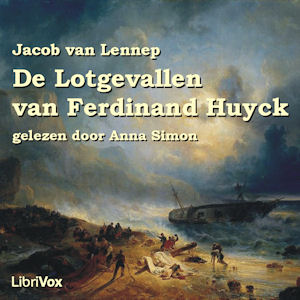
Een avonturenroman vol mysteries - met zeerovers, struikrovers, schipbreuken, moord en doodslag - afgunst, wraak en rampspoed afgewisseld door humor en liefde. Ferdinand Huyck, de zoon van de hoofdschout in Amsterdam, keert na een jarenlange reis terug in Nederland. Onderweg ontmoet hij Henriette Blaek, die hij al snel niet meer uit zijn gedachten kan zetten. Nog voor hij Amsterdam kan bereiken wordt hij echter bij Naarden overvallen en beroofd door struikrovers. Een geheimzinnige man, die zich Bos noemt, redt hem zijn leven. Wie is die heer Bos, die zich, met zijn mooie dochter Amelia, verschuilt voor de politie? En hoe moet Ferdinand zich eruit redden als Henriette hem toevallig ziet in gezelschap van Amelia, en zijn vader de hoofdschout ook hoe langer hoe meer achterdochtig wordt over zijn gedrag? Hij kan de waarheid niet vertellen, omdat hij beloofd heeft om de heer Bos en zijn dochter niet te verraden… Dit is het begin van een aaneenschakeling van avonturen.Laat je niet afschrikken door de wat droge inleiding - de actie begint direct in hoofdstuk 1![samenvatting door Anna Simon]A book filled with mysterious adventures - pirates, bandits, shipwrecks and murder - jealousy, revenge and disaster mixed with humor and love.Ferdinand Huyck returns to Amsterdam after a two years’ journey. Before he reaches his destination, however, he is mugged and robbed. A mysterious man, who calls himself ‘Bos’, saves his life. Who is this Mister Bos, who is in hiding from the police, with his beautiful daughter Amelia? This is the start of an adventure.[Anna Simon]
40 episodes
Fifty Famous Stories Retold by James Baldwin is a collection of short stories that give a snapshot into the life of a legendary hero or an event in history. Hear how Alexander the Great tamed Bucephalus, the kindness of Doctor Goldsmith, William Tell, George Washington and his hatchet, King Alfred as well as many other interesting tales. (Summary by Laura Caldwell)
51 episodes
The Young Visiters is a comic romance novella that parodies upper class society of late Victorian England. Social climber Alfred Salteena introduces his young lady friend Ethel to a genuine gentleman named Bernard and, to his irritation, they hit it off. But Bernard helps Alfred in his plan to become a gentleman, which, Alfred hopes, will help him win back Ethel.
(Summary by Derek Jensen)
3 episodes
David Elginbrod was George Macdonald's first real success, a novel of Scottish country life. Published in 1862, it was dedicated to the memory of Lady Noel Byron.(Summary from wikipedia)
71 episodes
Men of Iron by Howard Pyle is historical fiction that transports us back to the 1400's, a time of knighthood and chivalry. Myles Falworth is eight years old when news comes they must flee their home. His blind father is accused of treason. We see Myles grow up, train as a knight, and with perseverance, clear his father of any wrong-doing and restore their family name. (Summary by Laura Caldwell)
35 episodes
Set during the Hundred Years' War with France, The White Company tells the story of a young Saxon man who is learning what it is to be a knight. Raised by Cistercian Monks and rejected by a violent elder brother, Alleyn Edricson takes service with one of the foremost knights in the country. When Alleyn falls in love with the knight's daughter, he must prove himself to be a courageous and honourable knight before he can win her hand. Alleyn and his friends set forth with the other men-at-arms to join Prince Edward in Bordeaux, from where they will take part in the Prince's campaign into Spain. It is in Spain that Alleyn and others must prove themselves to be very valiant and hardy cavaliers. (Summary by Clive Catterall)
38 episodes
Set in the days of the religious wars of Europe, St. Bartholomew's Eve is the tale of the Huguenot's desperate fight for freedom of worship in France. As the struggle intensifies the plot thickens, culminating in the dreadful Massacre of St. Bartholomew's Eve. Henty, "The Boy's Own Storyteller" weaves the life and adventures of Philip Fletcher and his cousin, Francois DeLaville, into the historical background with thrilling battles, sieges and escapes along the way (not to mention a fair damsel in distress! ). (Summary by Minkona)
23 episodes
Ann Veronica was a controversial book detailing the development of a naive school girl into a "New Woman". When it was published, the Spectator described it as a "poisonous book ... capable of poisoning the minds of those who read it." Although it is unlikely to offend modern listeners in this way, this novel addresses many feminist issues that are still relevant today. (Summary by Joy Chan)
17 episodes
A fictitious account of a "friend" of William Shakespeare, who accompanies him from his birth to his death and beyond, chronicling Shakespeare's life, adventures, speeches, and impromptu bursts of poetry. (Summary by Tricia G.)
20 episodes
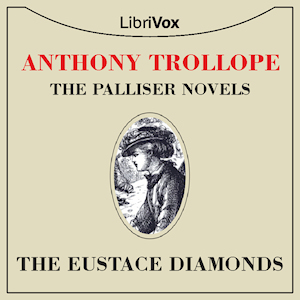
Lizzie Greystock, a fortune-hunter who ensnares the sickly, dissipated Sir Florian Eustace, is soon left a very wealthy widow and mother. While clever and beautiful, Lizzie has several character flaws; the greatest of these is an almost pathological delight in lying, even when it cannot benefit her. Before he dies, the disillusioned Sir Florian discovers all this, but does not think to change the generous terms of his will.
The diamonds of the book's title are a necklace, a Eustace family heirloom that Sir Florian gave to Lizzie to wear. Lizzie attempts to hold onto them, much to the irritation of the longtime family lawyer, Mr Camperdown. The Eustaces find themselves in an awkward position. On the one hand, the diamonds are a valuable heirloom to which Lizzie may not have a legal claim, but on the other, they do not want to antagonize the mother of the heir to the family estate (Lizzie having only a life interest).
Meanwhile, after a respectable period of mourning, Lizzie searches for another husband, and "the plot thickens". (Summary from Wikipedia)This is the third of Trollope’s six “Palliser” novels. LibriVox recordings of other novels in the series are available:
1-Can You Forgive Her?
2-Phineas Finn, the Irish Member
3-The Eustace Diamonds
4-Phineas Redux
5-The Prime Minister
6-The Duke’s Children
80 episodes
Kurzes Historien Drama um die Schlacht bei Stellau 1201 zwischen Dänen und Holsteinern. Den roten Faden bittet die Liebe zu einer Sklavin, unversöhnlicher Haß und daraus folgende Rache. (Summary by Wassermann)
4 episodes
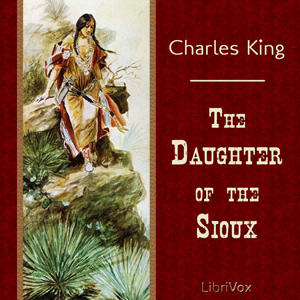
Charles King was a United States soldier and a distinguished writer. He was the son of Civil War general Rufus King and great grandson of Rufus King, one of the signers of the Declaration of Independence. He graduated from West point in 1866 and served in the Army during the Indian Wars under George Crook. He was wounded in the arm forcing his retirement from the regular army. During this time he became acquainted with Buffalo Bill Cody. King would later write scripts for several of Cody's silent films.
King's writings, relating to American Indians, cover a complex range of opinion within his novels. His sympathy for their cause of defending their homelands, and being forced to adopt a new lifestyle, did not stop him from graphically portraying them as savage and barbaric peoples. However, King also used his writings to harshly criticize U.S. government policies that resulted in Indian treaties not being honored and that permitted rampant corruption among government-appointed reservation agents. As a lieutenant in the 5th Cavalry, King was a participant on the American western frontier, who personally fought in battles with Southwestern and Plains Indians and observed government policies first hand. Charles King is credited today with helping to establish the "Western novel" as a romantic and dramatic genre of American literature, based upon a sturdy foundation of historical realism. (Summary compiled from Wikipedia and THE LIFE OF CHARLES KING
by Nathan Bender, Housel Curator, McCracken Research Library within The Buffalo Bill Historical Center.)
25 episodes

Clotel; or, The President's Daughter is a novel by William Wells Brown (1814-84), a fugitive from slavery and abolitionist and was published in London, England in December 1853. It is often considered the first African-American novel. This novel focuses on the difficult lives of mulattoes in America and the "degraded and immoral condition of the relation of master and slave in the USA" (Brown). It is about the tragic lives of Currer, Althesea, and Clotel. In the novel, Currer is the former mulatto mistress of President Thomas Jefferson who together have two daughters, Althesea and Clotel. Because she was beautiful and the mistress of Jefferson, Currer and her daughters lived a confortable life, this changed when her master passes away. In the end, Currer and Althesea are auctioned to the notorious slave trader, Dick Walker. Clotel is bought by her lover Horatio Green. The separation of these three women is just the beginning of the injustices they face.It gained notoriety amid the unconfirmed rumors regarding Thomas Jefferson and Sally Hemmings. Brown was still considered someone else's legal property within the borders of the United States at the time of its publication. It is considered to be the first novel written by an African American.Brown used the injustices of slavery to demonstrate the destructive effects it had on the African American family, most significantly the so-called tragic mulatto. Brown had escaped from slavery in Kentucky while still in his youth, and became active on the anti-slavery circuit.(Summary from Wikipedia)
29 episodes
This is the story of Ab, a man of the Age of Stone, who lived so long ago that we cannot closely fix the date, and who loved and fought well. (Summary from the introduction)
31 episodes

A wayside tavern where the local men drink and gossip; an unsolved, twenty year old murder at a nearby mansion; a very talkative black raven; a London locksmith and his family; a man apparently returned from the dead; a hangman who enjoys his job way too much; an anti-Catholic lord; a large and violent mob; and the British Militia—what do all these things have in common? All have, in some way, touched or been touched by the loveable, young, simple-minded “idiot,” Barnaby Rudge.
Barnaby’s good nature makes him a joy to most who know him. Unfortunately, his eagerness to please and his gullibility make him an easy prey for the unscrupulous. Can he emerge unscathed when once he gets tangled up with the wrong crowd?
Once again, Dickens has managed to temper the horrific with his characteristic wit and humor, as he tells this tale based on the "no-popery" or Gordon riots of 1780.
(Note: If the bird in this story seems familiar, it may be because he was the inspiration for Edgar Allen Poe’s poem, “The Raven.”) (Summary by Debra Lynn)
83 episodes
The Lancashire Witches is a highly fictionalised account of the activities of the notorious witches Demdike, Chattox and Alice Nutter who, together with others terrorised the district of Lancashire around Pendle Hill and the Forest of Bowland during the early seventeenth century. The witches named in the book were real enough, if not as witches then as people. Ainsworth, in his story brings in the dissolution of Whalley Abbey and the historic families of Assheton, Braddyll and Nowell and takes us through to the final trial and execution at Lancaster Castle in 1612. (Summary by Andy Minter)
53 episodes
Rob Roy is a historical novel by Walter Scott. It is narrated by Frank Osbaldistone, the son of an English merchant who travels first to the North of England, and subsequently to the Scottish Highlands to collect a debt stolen from his father. On the way he encounters the larger-than-life title character of Rob Roy MacGregor. Though Rob Roy is not the lead character (in fact the narrative does not move to Scotland until half way through the book) his personality and actions are key to the development of the novel. (Summary from Wikipedia)
46 episodes
The year is 1752. Devil, the Duke of Andover, and highwayman Jack, the Earl of Wyncham are at odds over a country squire's beautiful daughter. Cheating at cards, the marital problems of the younger sister of the Duke and the younger brother of the Earl, and debts beyond imagination form the backdrop for this romance, Heyer's first work and the only one in the public domain. (Summary by Sibella Denton)
60 episodes
An adventure novel about William Wallace, one of the most popular books ever written by Jane Porter. The French version was even banned by Napoleon, and the book has remained very popular with Scottish children, but is equally enjoyable for adults. (Summary by Wikipedia, revised by Kikisaulite)
90 episodes
Lew Wallace's Ben-Hur: A Tale of the Christ "Book 1" gives a sideline view of events taking pace around the days of Christ. Book 1 gives the account of Christ's birth. (Summary by MHAIJH85)
14 episodes

Mark Twain's work on Joan of Arc is titled in full "Personal Recollections of Joan of Arc, by the Sieur Louis de Conte." De Conte is identified as Joan's page and secretary. For those who've always wanted to "get behind" the Joan of Arc story and to better understand just what happened, Twain's narrative makes the story personal and very accessible.The work is fictionally presented as a translation from the manuscript by Jean Francois Alden, or, in the words of the published book, "Freely Translated out of the Ancient French into Modern English from the Original Unpublished Manuscript in the National Archives of France."It was originally published as a serialization in Harper's Magazine beginning in 1895 and later published in book form in 1896. However the Harper's editors decided to cut 12 chapters that describe much of Joan's Great Trial, saying the chapters were not suitable for serialization since, "They will not bear mutilation or interruption, but must be read as a whole, as one reads a drama." This recording contains the complete text!De Conte is a fictionalized version of Joan of Arc's page Louis de Contes, and provides narrative unity to the story. He is presented as an individual who was with Joan during the three major phases of her life - as a youth in Domremy, as the commander of Charles' army on military campaign, and as a defendant at the trial in Rouen. The book is presented as a translation by Alden of de Conte's memoirs, written in his later years for the benefit of his descendants.Twain based his descriptions of Joan of Arc on his daughter, Susy Clemens, as he remembered her at the age of seventeen.Twain said, "I like Joan of Arc best of all my books; and it is the best; I know it perfectly well. And besides, it furnished me seven times the pleasure afforded me by any of the others; twelve years of preparation, and two years of writing. The others needed no preparation and got none." (Summary by Wikipedia and John Greenman)
75 episodes

Phineas Finn is the fourth in Trollope's series of six Palliser novels. At the end of Phineas Finn, the second novel in the series, Phineas had returned to Ireland and married his childhood sweetheart after having left the House of Commons. As Phineas Redux opens, Phineas is working as a Poorhouse Inspector in Ireland. His wife having died in childbirth, he finds his existence dull and unsatisfying. Phineas' returns to England; his career advances and his romantic adventures continue, while we encounter many familiar characters including Glencora and Plantagenet Palliser, Madame Goesler, and Lizzie Eustace and her husband the Reverand Mr. AEmelius. (Summary by Karen Merline)
Warning! Do not read the Wikipedia article linked to the title of this novel unless you are prepared for a SPOILER!!!
LibriVox recordings of other novels in the series are available:
1-Can You Forgive Her?
2-Phineas Finn, the Irish Member
3-The Eustace Diamonds
4-Phineas Redux
5-The Prime Minister
6-The Duke’s Children
80 episodes
Last Days of Pompeii is a novel written by Edward Bulwer-Lytton in 1834. Once a very widely read book and now relatively neglected, it culminates in the cataclysmic destruction of the city of Pompeii by the eruption of Mount Vesuvius in 79 AD.The novel uses its characters to contrast the decadent culture of first-century Rome with both older cultures and coming trends. The protagonist, Glaucus, represents the Greeks who have been subordinated by Rome, and his nemesis Arbaces the still older culture of Egypt. Olinthus is the chief representative of the nascent Christian religion, which is presented favorably but not uncritically. (Summary from Wikipedia)
56 episodes
One of the two Historical novels Charles Dickens wrote, Barnaby Rudge is set around the ‘Gordon’ riots in London in 1780. The story begins in 1775 with Barnaby, his Mother, and his talking Raven Grip, fleeing their home from a blackmailer, and going into hiding. Joe Willet similarly finds he must leave his home to escape his Father’s ire, leaving behind the woman he loves. Five years later these characters, and many others whose lives we have followed, find themselves caught up in the horrific Protestant rioting led by Sir George Gordon. The mob which reaches 100,000 strong, gets out of hand, and there is danger to all in the path of their destruction. Charles Dickens skillfully weaves the lives of his many loving and many wicked characters through the rioting, and shows how this uprising changes so many lives. As a side note, Edgar Allan Poe is said to have been inspired by Barnaby’s raven Grip when he wrote his famous poem,”The Raven”.(Summary by Mil Nicholson)
83 episodes
Charles Kingsley (June 12 1819 - January 23 1875) was an English divine, university professor, historian, and novelist, particularly associated with the West Country and north-east Hampshire. As a novelist, his chief power lay in his descriptive faculties, which are evident in this novel as he pictures the Egyptian desert and the ancient city Alexandria. Hypatia, 1st published in 1853, is set in 5th Century A.D. Egypt. It centers upon a young orphan monk from a desert monastery who feels called to continue his religious life in the city. He discovers a sister, who is a prostitute living with a band of Goths. Other characters include Hypatia, a lady philosopher based on a historical personage; Cyril, Bishop of Alexandria; Felix, the Roman prefect; a Jewish man who has lost his faith; and an elderly Jewish woman who is like a sorceress. St. Augustine of Hippo makes a brief appearance. (Summary from Wikipedia with additions by Karen Merline)
52 episodes
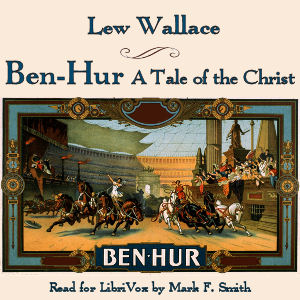
Ben-Hur is a story of two very different heroes. Judah Ben-Hur, a prince of Jerusalem, is involved in an accident to the Roman procurator which is taken to be intentional. He is seized and sent to the fleet as a galley-slave, while his family is imprisoned and the family goods confiscated. When Ben-Hur saves the fleet captain from drowning after his ship is sunk in a fight with pirates, that officer adopts him as son and heir. With Roman training, Ben-Hur distinguishes himself in the arena and the palistrae and appears to be on the way to high military command.With the help of a faithful family retainer and a generous Arab sheik, Ben-Hur is enabled to take part in a widely touted chariot race, where one of the other charioteers is the boyhood friend who connived to punish him for the accident and split his estate. That rival is crippled, financially and bodily, in a no-holds-barred race (memorable from the 1959 movie with Charlton Heston).Ben-Hur turns his attention to the prophesied King of the Jews, when through the sheik he meets Balthasar, one of the Three Wise Men, and hears of the child born years ago. Will Ben-Hur be the general who brings victories to the King, and finally liberates Israel from the oppressive Roman yoke? In his quest for the answer, Ben-Hur seeks out the Nazarene, now rumored to be The Messiah.THAT hero needs no introduction.Curious about the lack of kingly trappings and ambitions about this man, Ben-Hur begins to suspect that his kingdom is not of this world. And with him, we receive a gut-wrenching eye-witness view of Jesus’ arrest, humiliation, and crucifixion.
81 episodes

Dès 1828 Hugo avait conçu Note Dame de Paris et se rend plusieurs fois à la cathédrale. Il ressuscite le Paris d'autrefois avec sa cathédrale. Notre-Dame de Paris retrace la destinée tragique au Moyen Âge d'une jeune bohémienne, Esméralda, victime du désir qu'elle inspire à trois hommes. Convoitée par l'archidiacre Frollo, elle est enlevée sur son ordre par le sonneur de cloches difforme de Notre-Dame, Quasimodo, puis est sauvée par le beau capitaine Phoebus dont elle s'éprend. Mais Frollo, jaloux, poignarde Phoebus, et n'intervient pas lorsque Esméralda est accusée de ce meurtre. Elle est emprisonnée, puis délivrée, cette fois, par Quasimodo, épris d'elle, qui l'entraîne au sein de l'inviolable cathédrale. Les truands de la cour des Miracles, inquiets de sa disparition, assaillent l'édifice, et livrent, sans s'en douter, Esméralda à son pire ennemi, Frollo. Arrêtée, la jeune fille sera pendue sous l'oeil cynique de ce dernier. Quasimodo, enfin édifié sur son «bienfaiteur» Frollo, le précipite du haut des tours de Notre-Dame, et se laisse ensuite mourir dans les bras d'Esméralda dans le charnier où elle repose. ( adapté de http://romantis.free.fr/Victor hugo/html/notdadep.html)
66 episodes
Ramona, a novel written by Helen Hunt Jackson (1884), is the story of a part-Scottish and part-Native American orphan girl growing up and getting married in Southern California, suffering racial discrimination and hardship. Originally serialized in the Christian Union on a weekly basis, the novel became immensely popular. Overall, it has had more than 300 printings, been made into four film versions, and has been performed as an outdoor play annually since 1923. The impact the novel had on the culture and image of Southern California was enormous. Its romanticization of Mexican colonial life gave the region a unique cultural identity and its publication coincided with the arrival of railroad lines to the region, bringing in countless tourists who wanted to see the locations in the novel. (Summary from Wikipedia)
33 episodes
Swashbuckling tales of legendary pirates, buccaneers, and marooners, terrors of the Spanish Main.(Summary by Epistomolus)
20 episodes
In Part 2, Kitty’s health deteriorates from regret and heartbreak, while Levin retreats to his country estate. Anna and Vronsky continue to pursue each other and become the talk of polite society, to the chagrin of Karenin. (Summary by Mary Ann )
35 episodes
